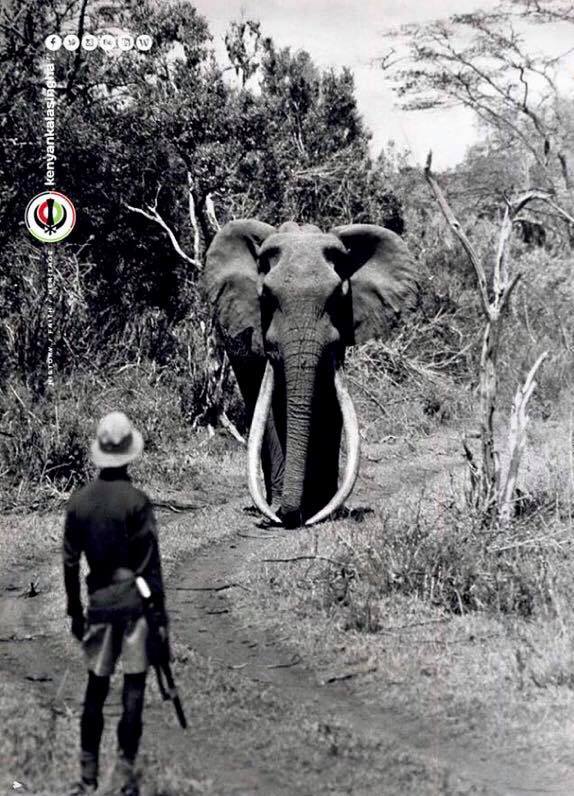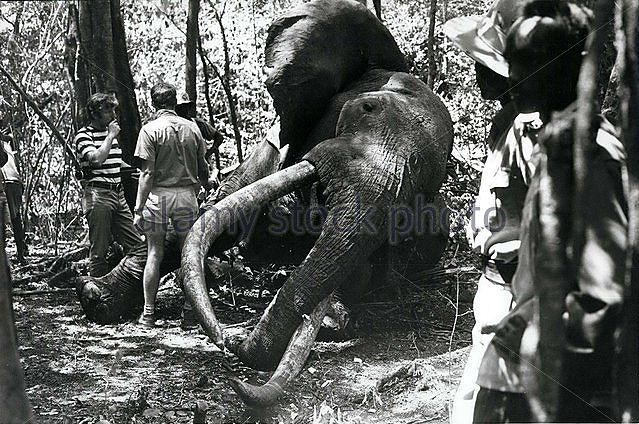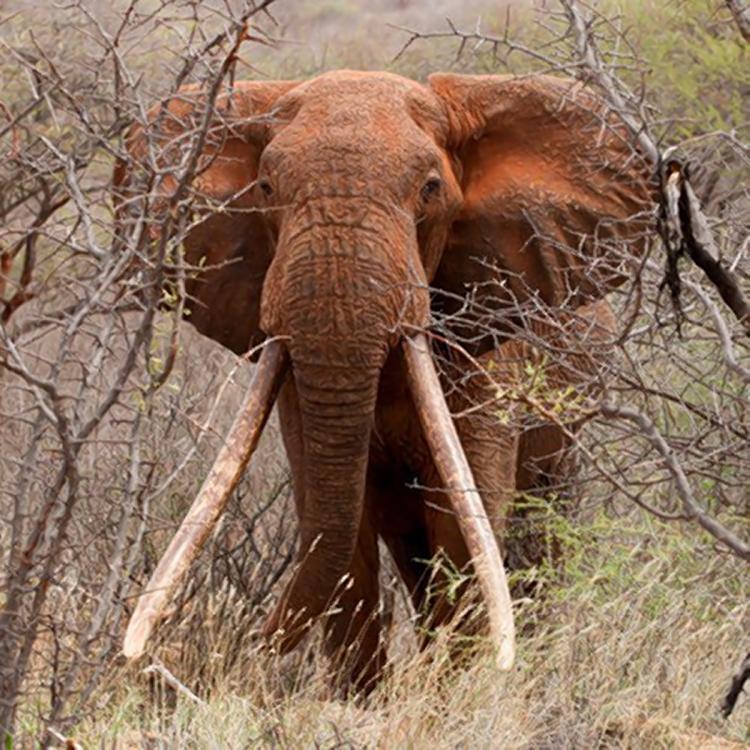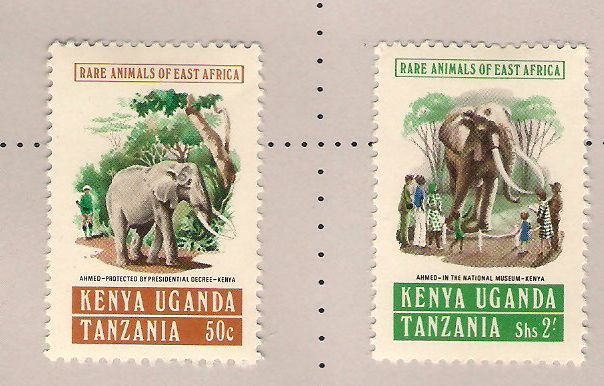Ahmed & Satao
The last of the big tuskers..
Ahmed
Ahmed was the only individual elephant in history to have been protected by presidential decree. Jomo Kenyatta, Kenya's first president, ordered the protection of an elephant with giant tusks named Ahmed in 1970. Ahmed was accompanied by two armed soldiers throughout his later life and died of natural causes aged 55, despite parts of Kenya facing a poaching onslaught.
Born in 1919, Ahmed came from the forests of Mount Marsabit and grew to become a truly giant tusker, justifiably known by the natives and big game hunters alike, as the "King of Marsabit". Ahmed of Marsabit was, and still is, the most famous Elephant ever to have roamed the African continent. The territory around Mount Marsabit in Kenya may always have been renowned for its extraordinary tuskers, yet this particular ”Bwana Tembo” eclipses all predecessors.
In 1970, in order to protect him from poachers, former President of Kenya, Jomo Kenyatta, placed the Elephant under his protection by presidential decree, an unparalleled occurrence in the history of the country and the only elephant to be declared a living monument. The giant was watched over day and night by two guards in an attempt to protect Ahmed from hunters or poachers.
A loner and quite elusive, Ahmed was seldom seen and was known better by reputation than by sight. One morning in 1974, after having waited in vain for their charge to reappear from the copse he had disappeared into the night before, his personal body guards decided to go and look for him. When they found Ahmed dead, he was not lying on his side, but resting majestically on his famous tusks, half leaning against a tree.
While Ahmed was alive it was thought that his tusks were of record size but after his death his tusks were found to weigh only 67,2 kg (148 lbs) each. This is still no mean size but is far from some other tuskers.
Today, Ahmed of Marsabit can be admired as a mounted exhibit in front of the Kenya National Museum in Nairobi.
Courtesy: Nomad magazine and Africa Hunting.
Note: A bull elephant is often referred to as a 'tusker' because its tusks are so long that they almost touch the ground.
Go back to: Families & Species Ambassadors
Satao
One of Kenya's most adored elephants, who had giant tusks and was known as Satao, was killed for his ivory by poachers using a poisoned arrow on 30 May 2014. Satao lived in Tsavo East National Park and was thought to have been born during the late 1960s. He was at least 45 years old when he was killed and it was estimated that he was one of the largest elephants in the world at the time of his death. He has been described as one of Kenya's most iconic and well-known tuskers.
Satao's tusks were over 6.5 feet (2.0 m) long and he was estimated to be the largest of the few remaining tuskers then living in Kenya (and a major tourist attraction in that part of Tsavo). Due to the great value of his tusks on the black market, Satao had been under nearly constant surveillance by the Kenya Wildlife Service (KWS) and the Tsavo trust for the 18 months prior to June 2014 (by air and on foot). Satao generally kept to a predictably small area with four other bull elephants. But in search of food following big rains, he had recently moved into a boundary of the park that was a known poaching hot spot, especially for hunters with poisoned arrows. Being a dangerous area for poaching with thick vegetation, and because of the constant poaching attempts driven by organised crime and rebel militias, the KWS and the Tsavo Trust could not ultimately prevent the poachers from reaching Satao.
In March 2014, Satao was found with two seeping wounds in his flank from poisoned arrows shot into him, which were confirmed by veterinarians who rushed to the scene to treat him. After a number of days, Satao recovered from his festering wounds. Satao was last spotted alive on 19 May 2014. On 2 June 2014, Richard Moller of the Tsavo Trust found a huge elephant carcass lying in a swamp near the boundary of Tsavo East National Park. The tusks had been cut off and the face was badly mutilated, so the carcass could not be identified with certainty at that time. For about 10 days, Moller and Kenya Wildlife Service searched for Satao before concluding he was dead. He was killed by a poisoned arrow shot deep into his left flank on 30 May 2014. Satao was officially declared dead on 13 June 2014 and the Tsavo Trust released the following statement announcing his death:
It is with enormous regret that we confirm there is no doubt that Satao is dead, killed by an ivory poacher's poisoned arrow to feed the seemingly insatiable demand for ivory in far off countries. A great life lost so that someone far away can have a trinket on their mantlepiece. Rest in peace, Old Friend, you will be missed.
The whereabouts of Satao's tusks are unknown. Satao was a victim of the illegal ivory trade where ivory is commonly poached and sold by terrorist organizations to China, which has the largest market for ivory in the world. On 20 June 2014, Kenya Wildlife Services reported that service rangers arrested three suspects for killing Satao. Paul Muya, a spokesperson for the Kenya Wildlife Services said that they were tracked down based on intelligence the Service had acquired.
Courtesy: Richard Moller of Tsavo Trust, Kenya and Christine Dell'Amore, National Geographic.



